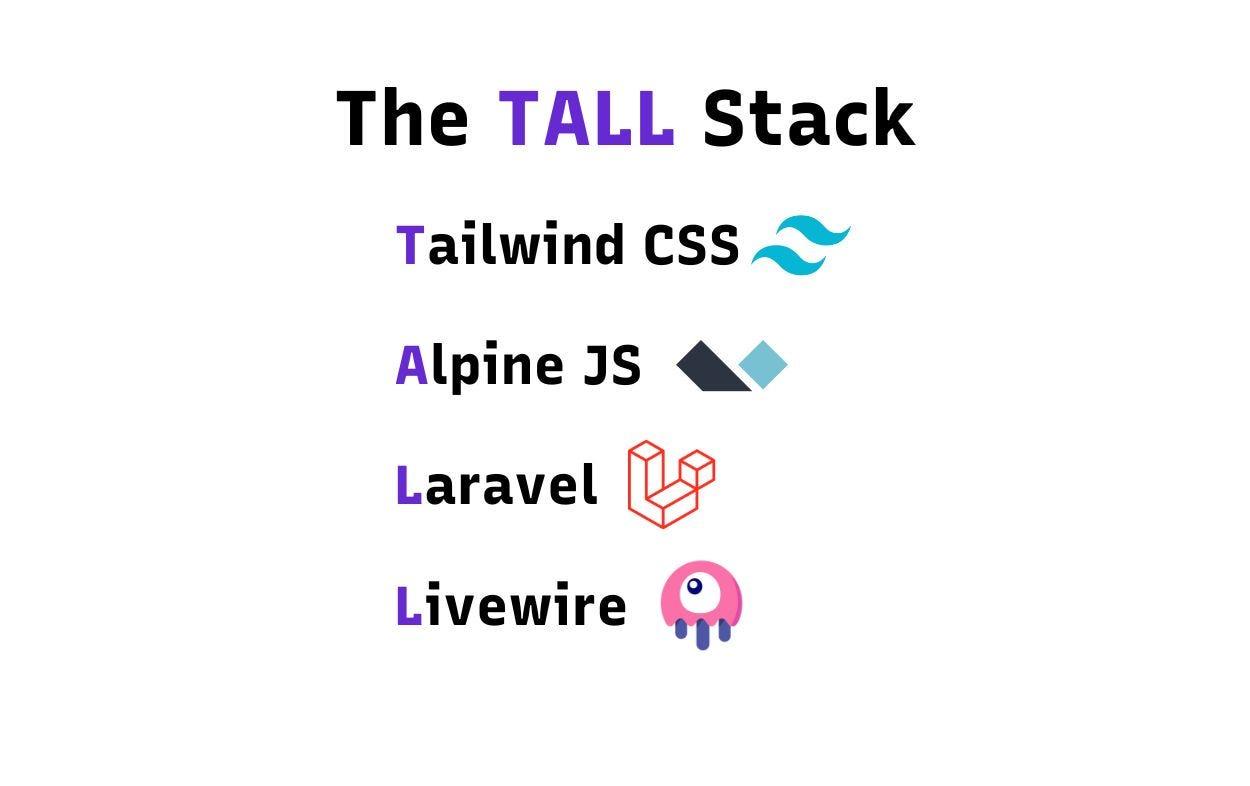The world of web development offers a plethora of choices when it comes to technologies. Choosing the right stack for your project can be daunting. Recently, I've been exploring the TALL stack, and I'm incredibly impressed with its power and elegance. This post will walk you through my experience building a full-stack application using TALL, showcasing its capabilities and why I believe it's a compelling choice for modern web development.
What is the TALL Stack?
TALL is an acronym that represents a powerful combination of technologies:
- Tailwind CSS: A utility-first CSS framework for rapidly styling your application.
- Alpine.js: A lightweight JavaScript framework for adding dynamic behavior to your front-end.
- Laravel: A robust PHP framework for building the backend of your application.
- Livewire: A full-stack framework for Laravel that makes building dynamic interfaces a breeze.
This stack offers a compelling blend of speed, maintainability, and developer experience.
Why Choose the TALL Stack?
Several factors drew me to the TALL stack:
- Rapid Development: Tailwind CSS allows for incredibly fast styling, while Livewire simplifies the process of creating dynamic interfaces without the complexity of a full-blown JavaScript framework like React or Vue.
- Full-Stack Synergy: Laravel and Livewire work seamlessly together, providing a cohesive development experience from front to back.
- Improved Developer Experience: The combination of these technologies leads to a more enjoyable and productive development process.
- Performance: Alpine.js is incredibly lightweight, and Laravel is known for its performance. This results in fast and efficient web applications.
Building My Application:
For this project, I decided to build a simple task management application. Here's a breakdown of my experience with each component of the TALL stack:
- Laravel (Backend): I used Laravel to build the API endpoints for managing tasks, users, and authentication. Laravel's Eloquent ORM made database interactions a breeze, and its built-in authentication features saved me a lot of time.
- Tailwind CSS (Styling): Styling the application was incredibly fast and enjoyable with Tailwind CSS. The utility-first approach allowed me to quickly create a clean and modern design without writing a lot of custom CSS.
- Alpine.js (Front-End Dynamics): I used Alpine.js to add interactive elements to the front-end, such as toggling task completion, displaying modals, and handling form submissions. Alpine.js's small size and simple syntax made it easy to integrate into my project.
- Livewire (Dynamic Interfaces): Livewire was the star of the show. It allowed me to create dynamic interfaces with minimal JavaScript. For example, I used Livewire components to handle task creation, editing, and deletion, all without page reloads.
Challenges and Solutions:
While the TALL stack is generally easy to work with, I did encounter a few challenges:
- Learning Curve: While each technology is relatively easy to learn individually, understanding how they all work together took some time.
- Livewire Complexity: For more complex interactions, Livewire can become a bit more intricate. However, the documentation and community resources were very helpful.
Benefits I Experienced:
- Increased Productivity: The TALL stack allowed me to build the application much faster than I would have with other stacks.
- Improved Code Quality: The combination of Laravel's structure and Tailwind CSS's utility-first approach resulted in cleaner and more maintainable code.
- Enhanced User Experience: The dynamic interfaces created with Livewire and Alpine.js provided a smooth and responsive user experience.
Conclusion
The TALL stack is a fantastic choice for building modern, full-stack web applications. Its combination of speed, maintainability, and developer experience makes it a compelling alternative to more complex JavaScript-heavy stacks. While there is a slight learning curve, the benefits far outweigh the challenges. If you're looking for a powerful and enjoyable way to build web applications, I highly recommend giving the TALL stack a try. I'm excited to continue exploring its capabilities and using it for future projects.
